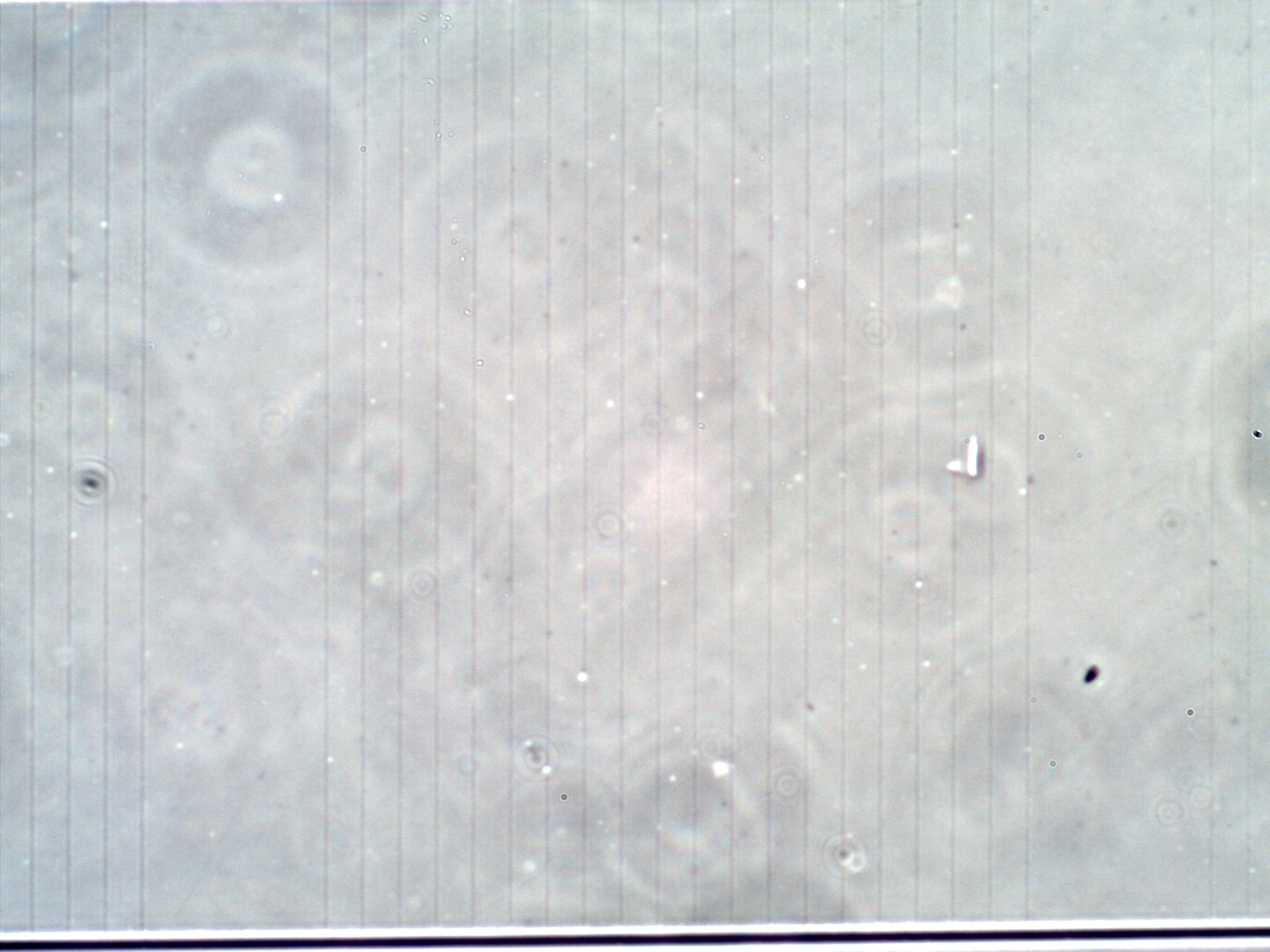H.S.E Test Slide Image, 40X NA 0.65 Objective
This is the pattern of lines on the standard Phase Constrast Test Slide used to assess the sensitivity to phase objects when using phase constrast microscopy. This photograph shows groups 5 through 7 using a 40X objective, NA 0.65,using a microscope (Olympus BH2) used by many contractors assessing the presence of airborne asbestos fibers with Phase Contrast illumination. The limited visibility required in NIOSH 7400 can be achieved by reducing illimination so the contrast between the background and the lines is below the sensitivity of the observer. It can also be achieved by increasing light scatter through the microscope with dirty optics.
Transmitted Phase Contrast Illumination, 40X Objective, NA 0.65
http://www.proscitech.com.au/cataloguex/get_notes.asp?S8084 This reference briefly gives some of the specifics on the design of the test slide.
Definition/Function:
The Phase Contrast Test Slide is manufactured to test the sensitivity of a phase contrast microscope to a given shift in phase between the direct ray and the diffracted ray paths for a specific configuration of the microscope. This slide is designed to test sensitivity to phase and not the resolution limit or limit of visibility (detectability) for the microscope. This photograph shows that the groups of groves #5 through #7 are detectable using this light intensity (setting of 6 volts) and phase contrast illumination provided the optics are reasonably clean. Neutral density filters can be added to decrease the contrast sufficiently to drop the contrast below the observer's detection limit. Dust in the optical path or other source of spurious light scatter will also reduce the contrast in the image. In order to comply with NIOSH 7400 the lines of set 5 may be Partially visible but the lines of set 6 and 7 must be invisible.Significance in the Environment:
This slide has been represented incorrectly by some as a test of the resolution limit of the microscope in a given configuration. It is actually used as a way to calibrate the microscopist to some vague average value for given round-robin test samples. The ability to see asbestos fibers on a cleared filter are a combination of the quality of the optics (microscope) and the capability of the microscopist. The range of visual acuity varies significantly from individual to individual and even for a given individual as a function of fatigue level and/or age. Add to this the difference in experience and the microscopist can be seen as a major variable in the results. Limiting the required visual acuity is an "aid" to the fatigued worker.Characteristic Features:
The patern on this slide consists of seven bands of twenty lines each. The width of the individual lines range from 1.1 micrometer for the first set to 0.25 micrometers for the seventh set of lines. The depth of each engraved line from which the resin cast is made is approximately one tenth of the line width. The refractive index of the resin used to make the cast is 1.58.Associated Particles:
References:
LeGuen, J.M.M., T.L. Ogden, T. Shenton-Taylor and J.F. Verrill, The HSE/NPL phase-contrast test slide", Ann. Occup. Hyg., Vol. 28, no. 2, pp. 237-247, 1984http://www.proscitech.com.au/cataloguex/get_notes.asp?S8084 This reference briefly gives some of the specifics on the design of the test slide.


